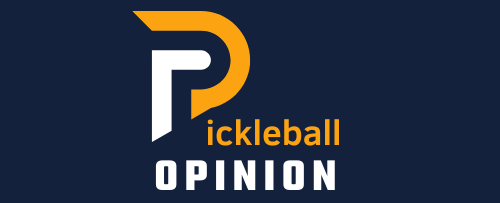6 Proven Tips For Pickleball Serving Rules-Change Your Strategy
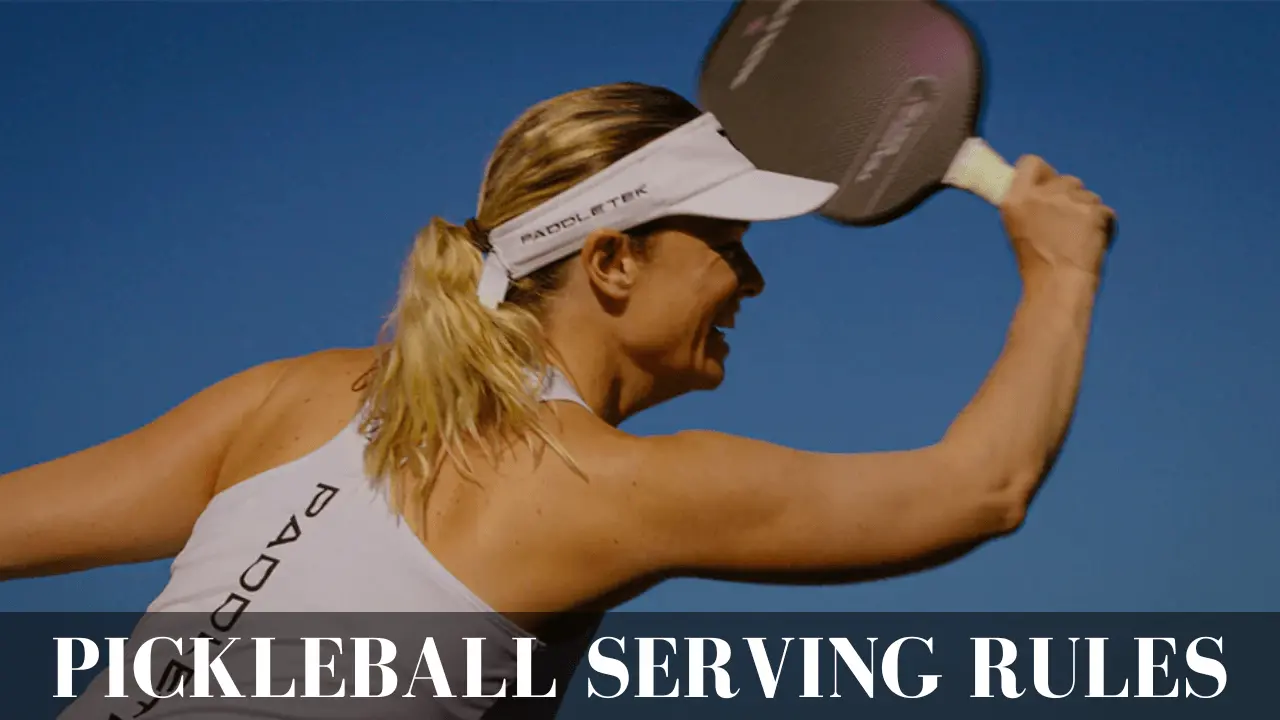
Do you know Pickleball serving rules? Of course not! Everyone desires an improvement in his game.
Pickleball can look complicated at the start, and every player wishes to improve the fundamentals upon which the entire game is based. In this game, serving rules have the value of backbone. If you can’t serve accurately, you can’t score and can’t win the game. Every rally starts with a service in the game.
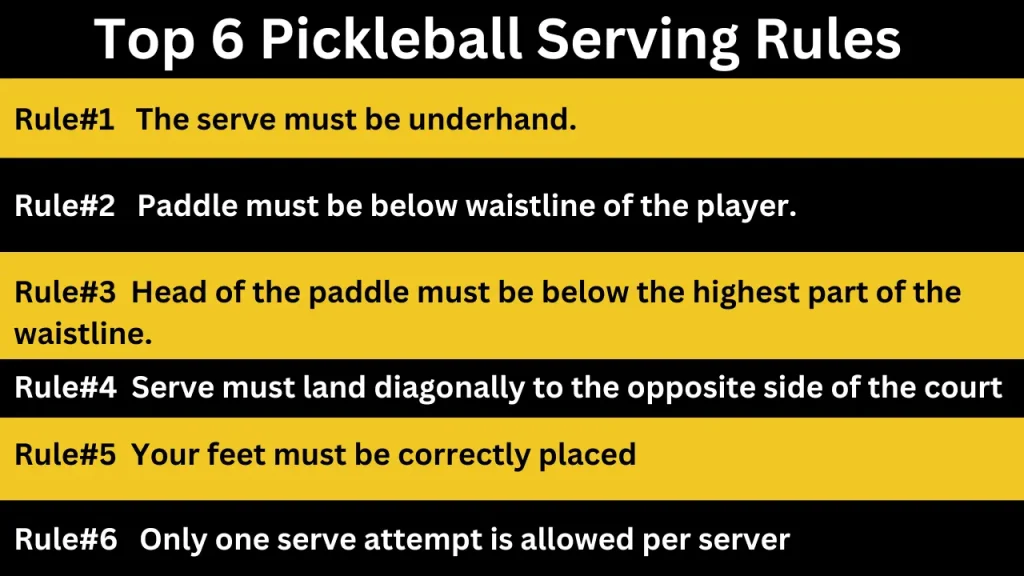
In this guide, we will discuss the serving rules in an easy way. Whether you’re a newbie to Pickleball or an experienced player, you need to know these rules. Although there are many variations to serve in the game, these are the three basic serving rules.
3 Basic Pickleball Serving Rules 2023
Underhand Serve
underhand serve is used in pickleball, while the overhand serve is required in tennis. Serving players should hit the ball below the waist at contact according to the Official Rulebook.
1. Consider hitting the service ball with a forehand or backhand motion (point to ponder); and
2. Ideally, the paddle head’s highest point should be below the point where your wrists band. After contacting the ball, you are free to use your pickleball paddle however you please.
- After contacting the ball, you are free to do whatever you wish with your pickleball paddle.
- Feet Placement: – At the point of serving pickleball, foot placement is crucial. During service, at least one foot of the serving player must remain on the ground behind the baseline while contacting the paddle and pickleball.
- A player cannot jump and serve simultaneously; at least one foot must remain on the ground behind the baseline of the court. In pickleball, touching the feet inside the baseline or outside its imaginary extension lines is prohibited. You are now free to place your feet wherever you wish, including outside of the imaginary extensions of the baseline or sidelines, when your ball makes contact during the service.
- Crosscourt Serve: – Pickleball serves must cross the net (although they may touch the court, net-there are no serving lets) and land crosscourt (opposite your court) in the service box. The serving ball must land within the non-volley zone, or crosscourt (diagonally opposite your court) enclosed by the baseline, sideline, and kitchen line.
- Serving isn’t allowed in the non-volley zone, kitchen, or its line, as it would be a fault in both cases. A served ball may land on any line, the baseline, the sideline, or the centreline. You lose the rally and your serve if you violate the rules mentioned above.
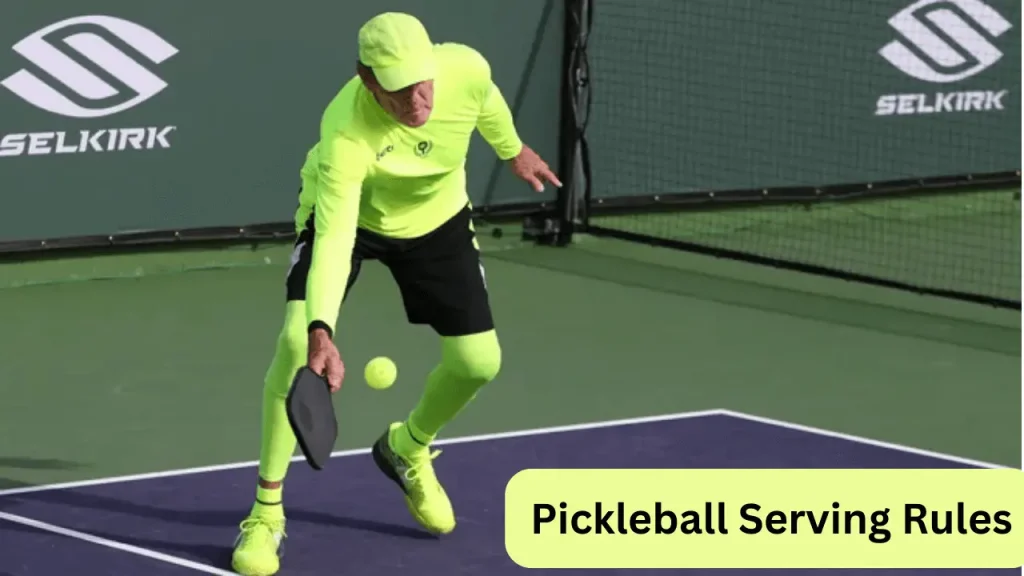
Three Types of Advanced Serves
In order to improve your pickleball game, you are curious to learn and improve your serving skills after playing the game a few times. It is only possible to score during a serve. To become masters of this game, we must learn these serving techniques.
- High Soft Serve
- Power Serve
- Soft Angle Serve
Each of the techniques discussed above has its own advantages. You can win your game by mixing up your serves and putting your opponent under pressure.
High Soft Serve
High-soft serves consist of hitting the ball in a high arc deep into the opponent’s court. It can be used from beginner to 5.0 ratings (1.0, 1.5, 2.0, 2.5, 3.0, 3.5, 4.0, 4.5, 5.0). It provides a lot of variation, keeping your opponent on their toes. You can aim your high-soft serve from the back or front of the service area.
Make your opponent move, displace them from their position, and set up your next shot with this trick. In order to hit a ball successfully, you must hit it hard and with power. However, it is a fitness game. A high-soft serve can provide a good changeup if your opponent returns power serves.
By using this service, you will be able to hit a hard serve right past another team who is close to you. The service is considered to be excellent on all levels. As a result of the high slow arc, the game speed changes, and your opponent are kept on their toes. Your opponent is restrained from attacking the court net by the high arc.
As a result of this service, the other player is compelled to put their own speed on the ball. Occasionally, the opponent will simply block the ball with their paddle. Keeping your opponent busy increases the chances of scoring and they will make mistakes as a result.
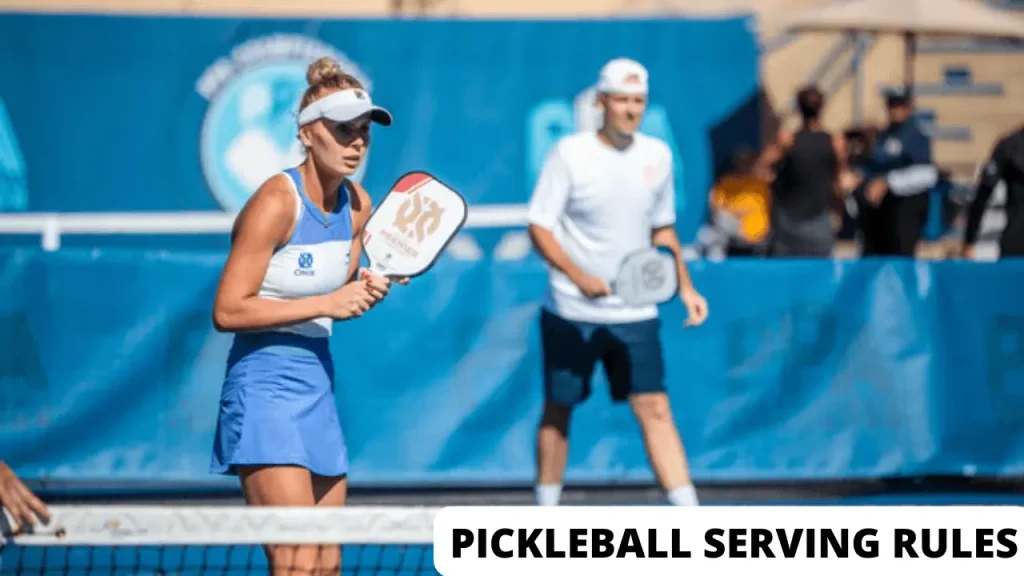
Power Serve
This service is low, fast, and deep into the court of your opponent. In order to make your opponent vulnerable, you may aim for the forehand, the backhand corner, or directly at them. Power serves are more difficult to return than high-soft serves, but they are an effective technique for improving your game. A shot such as this can be an excellent way to force your opponent to make mistakes if they have a weak backhand.
You should also keep in mind that if the other player is lazy, hitting the ball straight at them will force them to move to the other side of the court. When your feet aren’t set, returning a service can be a challenge. As an alternative to the high-soft service, this service can be used. The other player may begin to move forward after receiving a few high-soft serves.
Soft Angle Serve
In this serving technique, the ball is dropped near the kitchen line and along the sidelines. As a result of the bounce, the ball should land outside the court. Because the aiming target area is so small, it is difficult to serve the three main serves. The purpose of soft-angle serves is to drag your opponent off the edge of the court.
A lane is open on the far side of the pickleball court. You may be able to score easily in this situation, as the other player is not in a position to get back immediately. When you are playing doubles, and your opponents are stacked, a strategy in which both players are on the same side, is an excellent service.
A well-executed soft-angle serve can put the opponent out of position since they are on the same side. The opposing team is left with an open lane on the other side. It is the main objective of this service to place your opposition in a disadvantageous position. The other player must move when you drop the ball near the kitchen.
If your opponent fails to get back into position, you have an easy opportunity to hit in their lane or to throw directly over their heads. It is important to remember that this is the hardest and most difficult service, and if you do not have the opportunity to serve on the court, you cannot score.
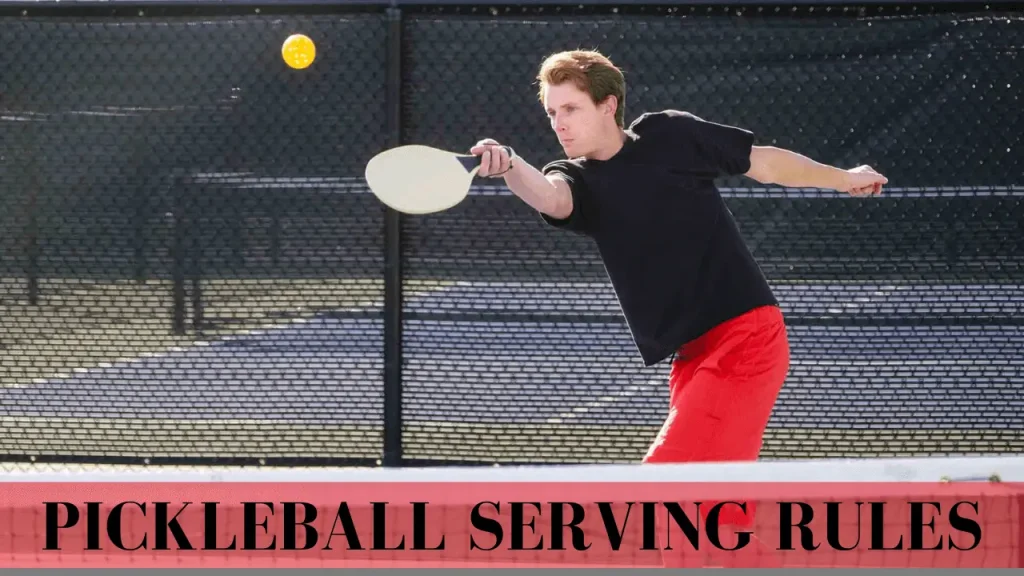
Pickleball Serving Rules Singles
In singles games, each player serves till they lose a point. You’ve to switch the side you’re serving after each serve. The right side of the court is used when your score is even, while the left side is used when your score is odd. In singles, if your score is even, you serve from the right side of the court.
Serve from the left if the score is odd. In the event of an odd score, serve from the left. Your score should be called out before your opponent’s.
Pickleball Serving Rules Doubles
Each player in the doubles team gets an opportunity to serve before the service switches back to the opposing team. In the beginning, the second server of the first team is omitted. Each side out is followed by a right-handed serve. The server changes sides after each serving.
Player position and rules about the players who serve first are slightly complicated. You can learn the most by playing with a more experienced player.
Pickleball Volley Serve or Pickleball Drop Serve
- There are two ways to serve in pickleball. It’s called a volley service. You must release or toss the pickleball and then hit it with your paddle without allowing it to bounce. It’s also known as pickleball serving rules bounce. A volley is served on a pickleball court using the traditional serving method. These are the following tips for volley serving.
- Try to lift or toss the ball into the air before hitting it with your paddle. As a result, you will have more time and space to strike the ball in addition to being able to strike it from a higher point of contact (instead of a lower point of contact around your knees). For experienced players, think of adding some spin to the pickleball on the toss (whether you use your paddle or hand). This extra spinning technique will increase the spin upon contact, making it a more difficult shot for your opponents.
- Don’t make any incorrect throws. You only have 10 seconds after the score has been shouted to hit your service. Consequently, if your service is unreliable, you can’t hit your service. Pick the ball up and try to toss it again.
- Practice ball tossing by adding spin if you wish to be skilled at ball tossing.
The second way of serving, an alternate serving method, is called drop serve. According to the Official Rulebook, this drop serve is for disabled players(for example, any player with one arm). Now, this drop serve is permitted for all players.
For drop serve, you have to drop or release the ball from any natural height, either with your hand or letting it roll off on your paddle, and then strike the ball with the paddle after the ball bounces on the court. In both the traditional pickleball volley serve and the new pickleball drop serves, many of the same rules are applicable.
Under either the traditional pickleball volley serve or the new pickleball drop serves, many of the same pickleball rules apply. For example:
- It is possible to play pickleball either forehand or backhand.
- In serving, it is important to follow the basic rules. In order for your serve to be successful, at least one foot must be in contact with the ground behind the baseline while your paddle is in contact with the pickleball. You may not touch the court inside or outside the imaginary extension lines of any sideline or centerline.
- There are certain basic rules that apply to the location of the service. Observe the basic rules when placing the service. Please make sure your service lands in the correct court, which is diagonal from the server. The ball can be hit within 10 seconds after the score has been announced.
However, suppose you strike a pickleball drop serve; in that case, no other restrictions apply- for example, the restriction for striking the ball below your waistline, moving your arm in an upward arc, or keeping the highest point of your paddle head being below the highest part of your waist.
That’s why, if done properly according to the rules, the pickleball drop serve will never bounce higher than your waist. Therefore, the pickleball drop can hit with many spins, which can’t be hit with a traditional pickleball volley serve. A drop service with side spin could be difficult to return for the receiving team (especially in the Non-Volley Zone).
It could also hit with a lot of forehand topspin, which is impossible while hitting a traditional volley serve of pickleball.
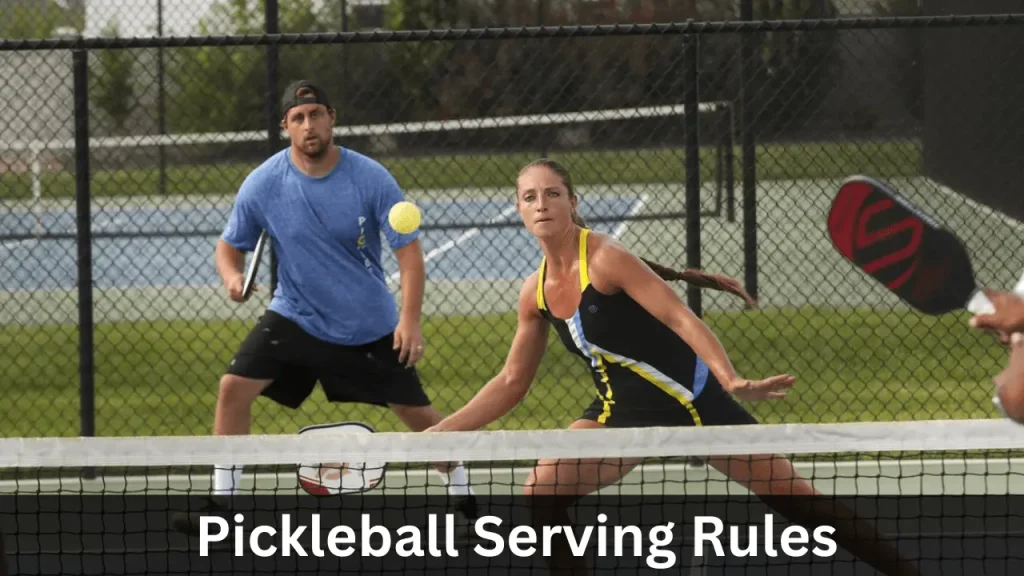
Drop Serve Pickleball – What is a Drop Serve
The reason for including drop serve pickleball in the Official Rulebook; it’s a better serving for disabled players (for example, any player with one arm). For being beneficial, these rules have been included in the provisional rule in the Official Rulebook. These are other benefits of that the drop service:
• Very easy to teach beginners;
• Provide players with the “yips” or “server’s block” an option to tackle such “yips” or “server block”; and
• Very easy for referees to enforce the rule because referees only require establishing whether the player dropped the pickleball correctly.
A drop serve involves releasing the ball from any natural height with your hand or by letting it roll off your paddle and then striking it with your paddle once it bounces on the court. There’re a few unique rules to know when it comes to how to release the ball on your drop serve:
- No aid should be taken while releasing or dropping the ball during pickleball drop serve. In other words, the drop or release of the pickleball must be simple, and only gravity may push the pickleball toward the court.
- The drop or release of pickleball while serving must be visible to both the receiver and, if the game is officiated, the referee. If the pickleball is not visible to the receiver and referee at the time of drop or release, then a replay must be called before the return of serve. Again, if the drop/release is not noticeable, a replay will result (rather than a fault and loss of service). Furthermore, a replay is not called until the return of the service, so the point plays!
- If you fail to release or drop the pickleball, likewise, the pickleball serve rules(in simple words, by aiding the pickleball by some force other than gravity, such as by throwing down or tossing up the pickleball), then you will have committed a fault, and you will lose your serve.
- There’s no bondage on how many times you may release or drop the pickleball. For example, if you drop the ball, the ball takes a strange kind of bounce, then simply catches the ball and re-drops it.
- There’s also no restriction on where the pickleball may land on your release or drop for your drop serve. It means that your release or drop serve of the pickleball could land anywhere on the baseline, sideline, centerline, or even on the court of pickleball as long as you obey the basic pickleball serve rules for foot placement.
Lastly, if you are trying to use the pickleball drop serve, but the pickleball is just not coordinating with you and is taking strange bounces, you can always change the pickleball volley serve or another way round. Moreover, keep in mind that you only have 10 seconds after calling the score to hit your serve on the pickleball court.
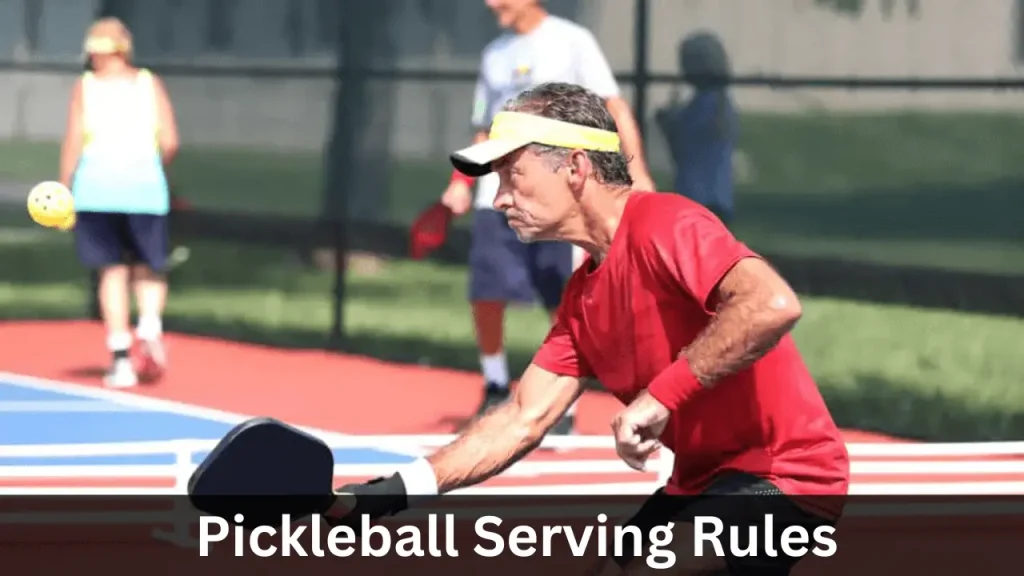
When to Serve the Pickleball
You can’t serve the pickleball until the complete score is shouted(in simple words, all 3-digits during doubles pickleball play or both 2-digits during singles pickleball play). Explained in another way, you can’t make contact with the ball on your service until the complete score is shouted- otherwise, it’s considered a fault from your side.
After the score has been called (by either the server or the referee), the server has only 10 seconds to serve the pickleball. You should consider whether the receiving team is in the right position or is ready to receive the service (keep in mind that the call should not be made until the receiver is in the correct position and the receiving team is ready to receive the service). Only one exception in the 10-second rule, when the score is shouted, and the serving team thinks that their position is wrong, they can switch their position in the court, then the serving team and referee must permit the receiving team time for re-positioning.
- During an officiated match, the server has 10 seconds to serve the pickleball again.
If you violate pickleball rules – the start of the serve or the 10-second rule- a fault will announce, and you will lose your serve.
Readiness and Avoiding Pickleball Quick Serves
A server can’t contact the pickleball for the service until the complete score has been shouted (in simple words, all 3-digits during the doubles game, or both 2-digits during the singles game). Thus, a player could quickly serve you if they started serving before the entire score was called.
The server is not responsible for this. The server is not responsible if it begins serving before the full score has been called. Normally, a fault occurs when the server’s paddle contacts the pickleball before all the scores have been called.
Scores cannot be called until both the server and receiver are in the proper position and all players are ready to begin to play pickleball at the same time. There are a few signs that you’re not ready:-
- Raise your paddle or non-paddle hand above your head.
- Complete Turn your back to the net.
- However, it’ll be ignored if the “not ready” signal is triggered after the score is called. You cannot delay a game with “not ready” signals. The practice of quick servers deliberately continuing to serve you even after you have indicated that you are not ready is unfair, especially when the server commits a fault or service after you have indicated that you are not ready. In recreational settings,
- 1. When the server touches the pickleball, prepare for service immediately.
- 2. Avoid situations when you are in the court of pickleball with the quick server. In order to participate in a tournament or other organized competition, you must: 3. As soon as the server touches the pickleball, anticipate the serve.
- 4. You might want to consider a referee director/organizer to assist in resolving the issue. It is important that a server waits until you are ready, calls the score completely, and contacts the ball quickly.
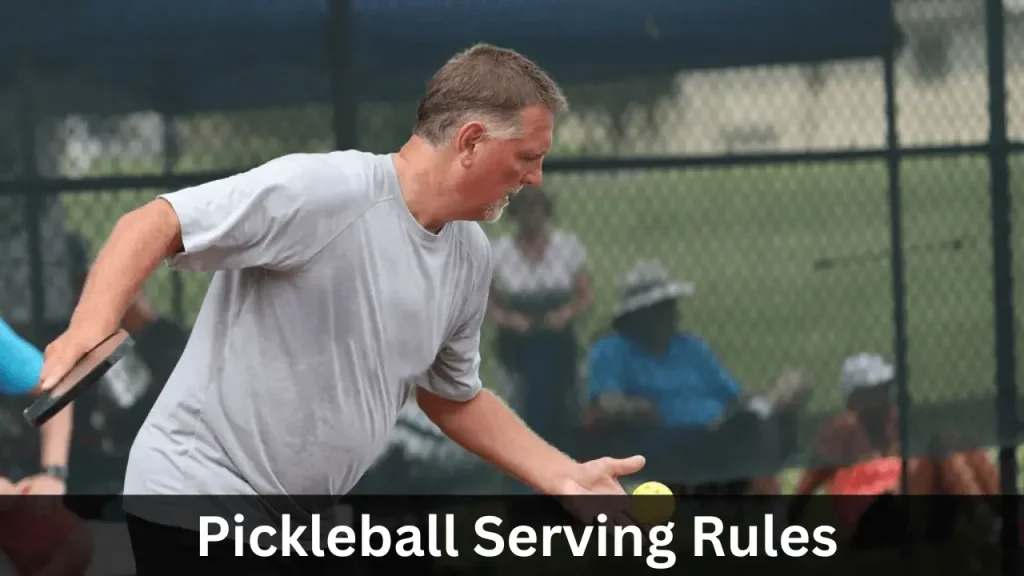
Pickleball Serving Rules on Service Faults
- In pickleball, a fault is a violation of the rules that stops the game and results in a losing rally. On the serving in pickleball, faults can commit. According to the Official Rulebook for pickleball, these actions will result in a fault on the serving team, and the significant server will miss their service.
- There is a fault with the foot service. Foot service faults are measured when the paddle of the server contacts the pickleball.
- Foot service faults happen at the point of contact.
- Whenever a foot does not contact the ground behind the baseline, a fault occurs.
- When the foot contacts the baseline or any area inside, it is considered a fault.
- The act of touching an area on or outside the imaginary extension lines of a centerline or sideline.
- The wrong player of the serving team performs service of the pickleball(point to ponder, it’s a common fault when doubles pickleball is going to stack.).
- The serving player adopts an illegal pickleball serve motion.
- The serving ball lands outside the service court’s relevant part. It’s regardless of whether or not the pickleball contacts the cord net or net (there’re no service lets in the pickleball). The baseline, centerline, and sideline are part of the service court without the Non-Volley Zone or its line. Consequently, if the serving pickleball touches the Kitchen or its line, the server will have committed a fault.
- The server hits the ball for the service before the complete score (all three score numbers, such as 0-0-2, in the doubles game, are shouted out.).
- Before touching the ground, the serving ball makes contact with any permanent object (other than the court net).
- It’s a fault when the serving the ball touches the server and anything else the serving player is wearing or holding.
- After making contact with the paddle with the pickleball, the serving player either calls for a timeout or demands the referee to confirm the game’s score. In simple words, once the pickleball is served, neither the serving player may call a timeout nor makes a demand from the referee to confirm the score.
No Service Lets in Pickleball
When the serving pickleball hits the net, cord, strap, tap, or band of the pickleball net, the game continues. Pickleball does not have service lets (in other words, when pickleball contacts the net and lands inside the service court, the service is not replayed). The serve can be faulty if it contacts the net, rope, strap, tape, or band of the pickleball net, and lands outside of the accurate service court (for instance, in the kitchen or outside the baseline, sideline, or centerline).
There were service lets in the game of pickleball in the past.
- In order to maintain etiquette and not call “phantom lets” on “ace serves”, this rule has been modified to eliminate service lets;
- minimize disputes between players and referees’ players over a let call; and eliminate a distracting technique by referees:
- holding the pickleball net while detecting lets, and then stepping back out of bounds after detecting lets.
Pickleball Serving Rules on Receiving Faults
If you commit a fault on the pickleball court, it halts the game and causes the team or player to lose the rally. Faults can be from the receiving team during the return of the server on the pickleball court. It is stated in the Official Rulebook that the following actions by the receiving team will be considered a fault, which will result in the serving team losing a point:
- The wrong player of the receiving team hits the ball(remember, this is a common fault when the doubles team is stacking is possible that the receiving player (or partner) touches or hinders the pickleball’s flight before it bounces.
- When a pickleball is intentionally served by the server so that it hits the opponent player near the pickleball net, the receiver is considered to be at fault. In other words, if the serviced pickleball floats too long and bounces beyond the baseline, it’s the receiver’s fault, even if the service would have bounced out of bounds.
- When the paddle of the server contacts the pickleball for service, the receiver (his or her partner) either calls for a timeout or requests the referee to confirm the score. In simple and easy words, the ball has been served, and neither the receiver (his or her partner) may ask for a timeout or request the referee to confirm the score of the game.
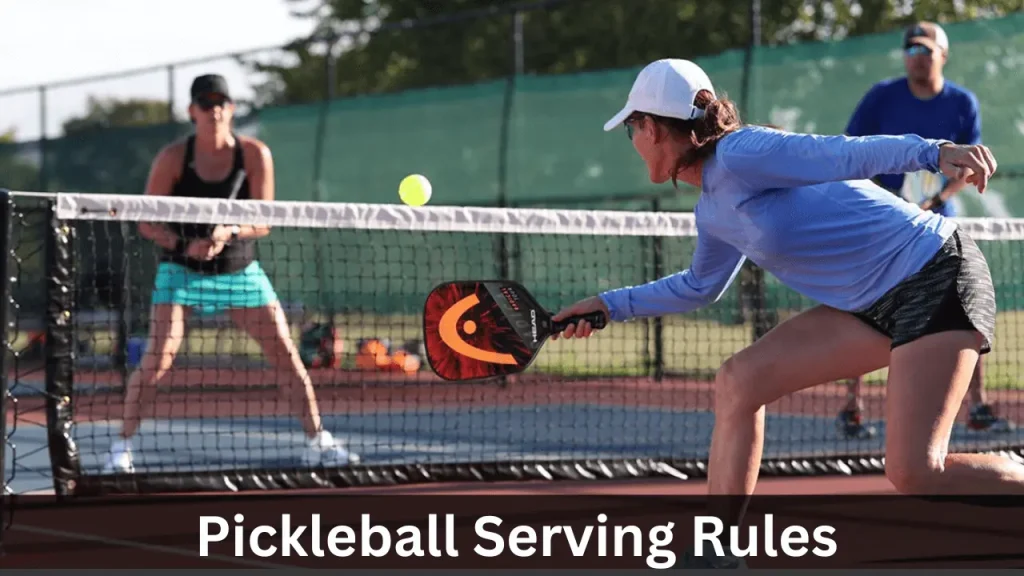
What Is a “Nasty Nelson”?
Newcomers may not know the phrase “Nasty Nelson.” There is some controversy surrounding the use of this phrase on the pickleball court. For the good knowledge of the beginner, On the pickleball courts, Nasty Nelson depicts the serving player consciously striking the opponent near the net (in other words, the opposing player that is not receiving the service).
The receiving team will commit a fault if the service ball hits the opponent before it bounces, and the serving team will receive the point. In general, this method is the easiest to execute successfully as long as the opponent is close to the centerline of the pickleball court and/or not paying attention to the server.
It reminds me of Tim, “The Puppet” The controversial playing style of the master” Nelson makes him a top pickleball player.
7 Unique Tips for Pickleball Serving
The following seven unique tips apply to the pickleball volley serve and drop serve, respectively.
Volley Serving Tips
- If you wish to make your shot difficult for your opposing player to strike, add spin to the ball while tossing it; this will increase the spine when you make contact with your paddle.
- A serving player has only 10 seconds to make contact with the pickleball after the score is shouted out. If you’ve got a bad toss, don’t hit the ball. The best course of action is to pick up the book again and give it another try.
- A serving player has only 10 seconds to make contact with the pickleball after the score is shouted out. If you’ve got a bad toss, don’t hit the ball. Pick it up and try again.
- Accuracy and depth in serving are more crucial than power.
- Try to focus on your practice. Work hard on your service.
- Most of the experienced players intend to use the traditional method of service because they can get a higher contact point than with a drop serving. The higher contact of the ball permits them to strike the ball more straight as opposed to a drop serving contact that needs them to hit more upward.
Drop Serving Tips
8. Feet placement rules apply to drop serving. Make sure you know these important rules, as mentioned above, but keep in mind that the ball cannot go behind the line like your feet can.
9. A drop serve has the advantage of sacrificing a higher contact, allowing the player to use a high-to-low motion. Because of the drop serve feature, you can apply heave slices for a drop serving which may be a new option to add variety and change your service to keep your opponent distracted.
Conclusion
At the end of this article, I will suggest that practice is the key to success. To become a master in pickleball, everybody should focus on pickleball serving rules. Serving requires a great deal of practice for each type. The integral part of the service is putting the ball in play.
Your score and the winning chance of the game depend upon the server. It is important to consider when to use each service and where you would like the ball to land in addition to mixing up your serves.
